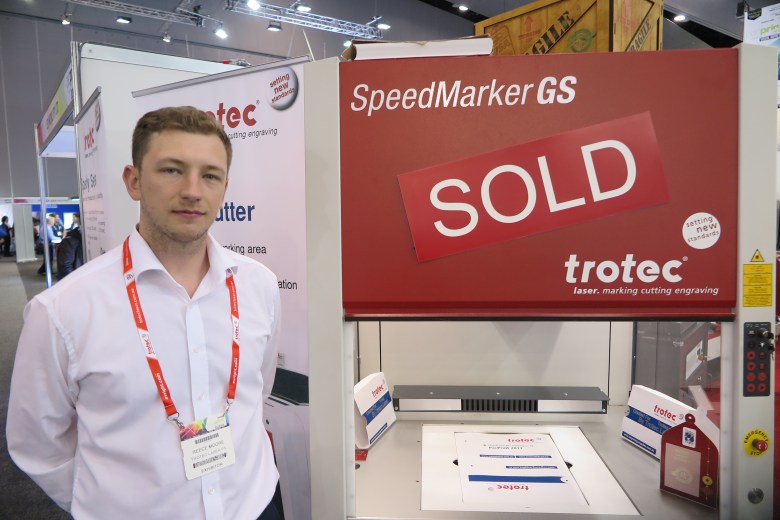
Trotec Laser will be introducing two new laser cutters for wide-format finishing later this year, both in its SP range.
Reece Moore, managing director, Trotec Laser Australia, says, “We have a few new wide-format solutions which will be seen in Australia for the first time later this year including the SP2000 and the SP3000 laser cutters.
“The series has won an If design award, a German Design Award, and an EDP award. Essentially, they are class two large format lasers which can be activated from all sides.
“We have seen productivity gains from our existing range of up to 50 per cent in certain applications, and we are proud to say that we will have some customer installations happening in July and August this year.
“At the end of the day, there are quite a few people out there with the same finishing capabilities, and we have to grow the market as opposed to saturate the market.”
The 3000 has a 2210 x 3210mm footprint, and is the largest cutter introduced in the range, while the SP2000 is being offered as a smaller counterpart.
Trotec says the SP2000 laser cutter was developed with a working area of 1680 x 2510 mm, giving it an optimised footprint, ideal for applications that can be processed with the SP3000, but require less space. The lasers can cut through plastics, woods, and textiles.
Moore says, “One of our latest solutions currently on the market is the GS1000. It is a high speed, C02 galvo laser, and has a superpulse laser which is designed for processing sensitive materials.
“It pulsates fast and has a much higher peak power than a normal laser, which in this industry removes some of the preconceived ideas about burnt edges and unsaleable product after the laser finishing.
“The print finishing segment is one of the largest growing sections from our point of view, and this is built for that. The GS1200 automates the solution, bring in an on-air, patent-pending cutting system. This allows for no back reflection on any of the substrate, as it is supported in mid-air.
“Both solutions add flexibility. Finishing with dies, blades or guillotines are common but have shortfalls. Changing the design or doing rapid prototyping with a die is not feasible. To create a point of difference as a supplier to the industry, you need to have the latest designs and you need to have flexibility.
“A finishing process that brings in engraving or marking of variable data at the same time combines processes and adds value for the customer.”
Comment below to have your say on this story.
If you have a news story or tip-off, get in touch at editorial@sprinter.com.au.
Sign up to the Sprinter newsletter
